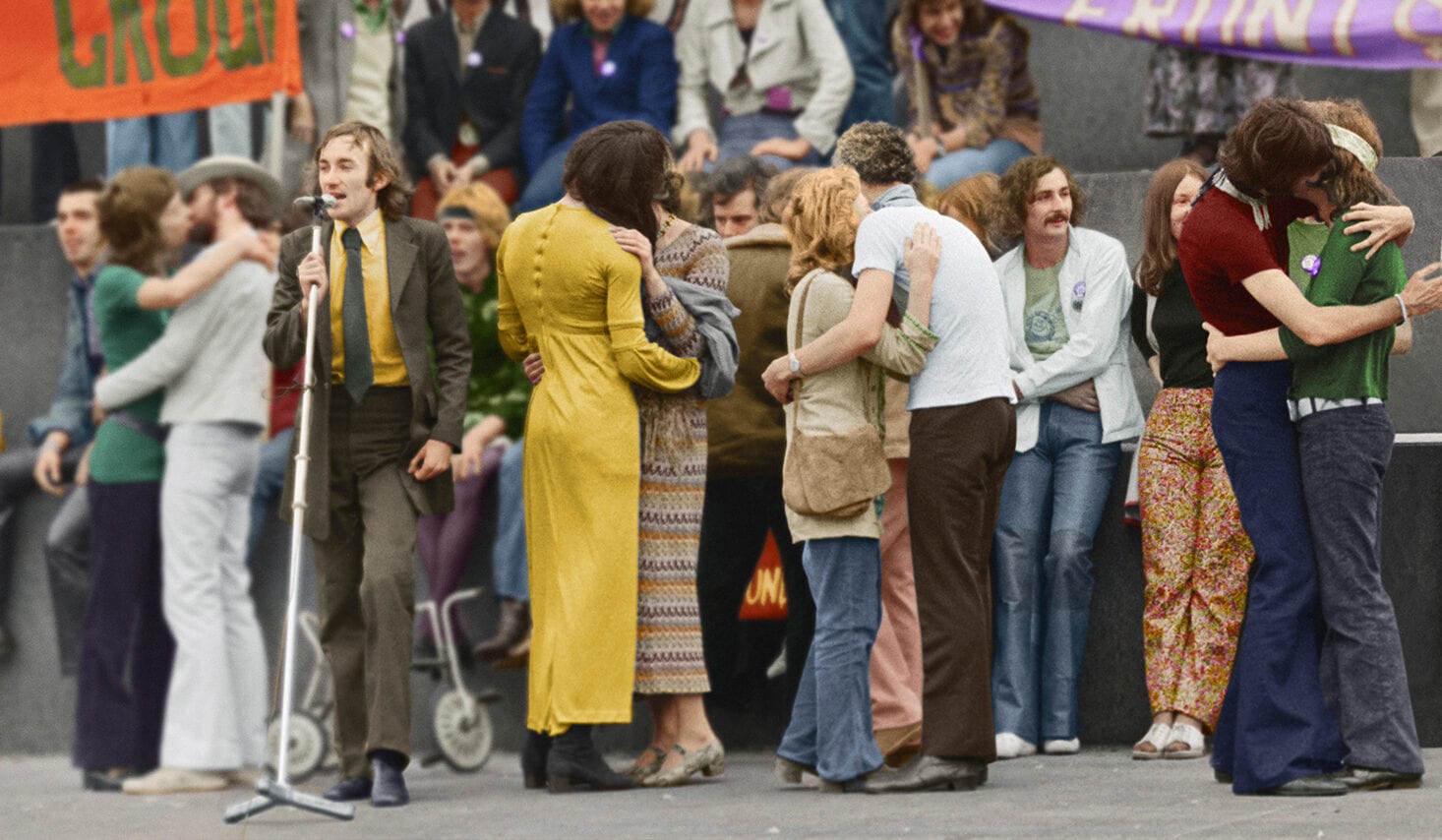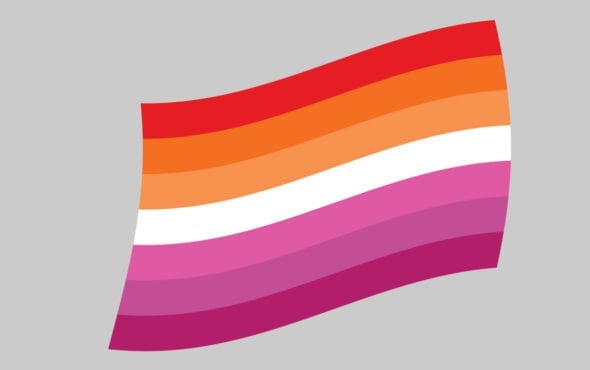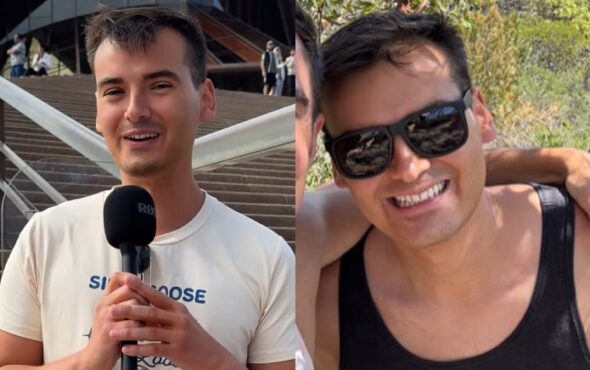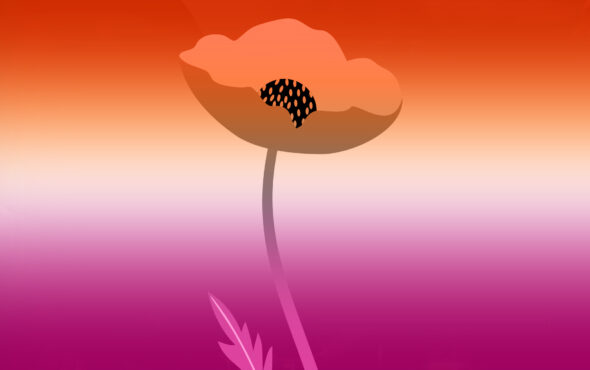
During Pride, only one rainbow deserves to be seen. That’s why SKITTLES® has given up its rainbow to re-colour moments from Pride’s history. In partnership with GAY TIMES, Switchboard and Queer Britain, the Recolour The Rainbow campaign has breathed new life into archive imagery to acknowledge and celebrate those who have come before us in the fight for LGBTQ+ liberation.
Alongside the recolouring of four black and white images, we have delved deeper into the stories of the people featured in the photographs to find out their memories of the moment, and to spotlight and preserve queer history for a new generation.
The year is 1971. Motown and the sounds of Diana Ross and the Supremes fill the bars and clubs. Despite her death in 1969, Over the Rainbow by Judy Garland is considered to be the Gay National Anthem. “Everybody owned a copy of Judy Garland’s concert at Carnegie Hall. When you went into a house you always knew if it was a gay house because it had a tiny statue of Michaelangelo’s David and you would have the Judy Garland Carnegie Hall album. Dead giveaways,” laughs Philip Rescorla, one half of one of the kissing couples in the photo.
The day began as one of the Gay Liberation Front’s Gay Days in Hyde Park. After congregating for an hour, the march started. Time Out said the march had about 500 people, the police said 100, but Philip Rescorla reckons there were around 250. “We didn’t fill Trafalgar Square. It was led by a Nigerian Drum band,” he says. “Strangely enough the police would only allow us this one float. So we put the band on it and it led the march.”
The Gay Liberation Front was formed in October 1970 in the London School of Economics by Aubrey Walter and Bob Mellors, who had returned from America and were impressed by the recent formation of the LGBTQ+ and Black Panther movements. After spending eight months gaining members and staging various demonstrations, it was now the day the Gay Liberation Front Youth Group marched from Marble Arch to Trafalgar Square to protest against the legal age of consent at 21. Philip was lucky to be at the London School of Economics at the time, attending the meetings from the beginning. Nineteen people attended the first meeting and as the weeks and months passed by, the membership grew to 200.
The march in August was organised by 19-year-old Tony Reynolds, who liaised with police officers to gain permission for the route – one which is no longer usable due to protests from stores on Oxford Street. The Youth Group was one of the many sub-groups within the Gay Liberation Front and Philip Rescorla attended as part of the Street Theatre. “The whole point of the organisation was that we would come out and say ‘We’re here, we’re out and proud’ and to show people that we are no different from anybody else, and that we deserve the same rights as everybody else.” However, it was his first time on the plinth at Trafalgar Square taking part in “picking the chicken”. The set up included a number of couples who would stand and kiss, then the question would be asked who is under 21 (but above the legal age of consent of 16 for heterosexual people), and does it matter? The word ‘chicken’ was used to describe younger gay men. The term now would be ‘twink’.
During the march, Philip was handing out leaflets and was pushed by a heterosexual couple who told him, ‘Get back into the gutter where you belong.’ Philip started to laugh, undermining the couple in the process and got back to marching. Other people asked who the marchers were, and when told they were members of the LGBTQ+ community, the response was: ‘Really? There’s loads of you! Are there that many homosexuals around?’
On being shown the photo, Philip felt emotional. “It’s lovely because the 70s feels like a very black and white decade to me, so seeing that colour is lovely. It was such a great day,” he says. Philip adds that he’s also pleased the Gay Liberation Front badges have been given their purple prominence. Philip gave his badge to the Hall Carpenter Archives as he wanted it to stay in a safe place. “I love the photo. It was such a great day.”
If you have a black and white photo from Pride’s radical beginnings, you can submit it here for the chance to have it recoloured and donated to the Queer Britain Archive.
Queer Britain is the national LGBTQ+ museum that is preserving queer history for generations to come. Click here to find out more about the work Queer Britain does and to support their mission to build the first national LGBTQ+ museum in the UK.
This is the fourth year SKITTLES® has been a key supporter of Switchboard, helping to raise awareness of the crucial service they provide to the LGBTQ+ community.
Since 1974, Switchboard has run an LGBTQ+ helpline that has supported millions of people in need of someone to talk to. They continue to help LGBTQ+ people every single day – no matter what the question. Switchboard’s LGBTQ+ helpline can be reached on 0300 330 0630. Click here to find out more about the services Switchboard provides and to help support their mission.


